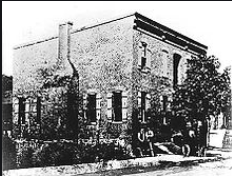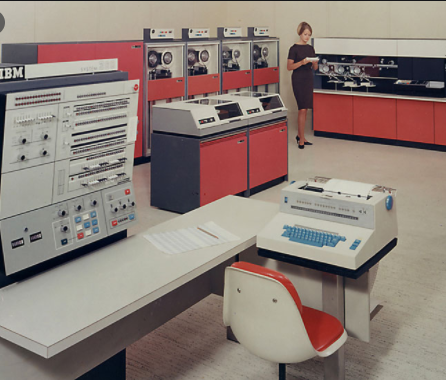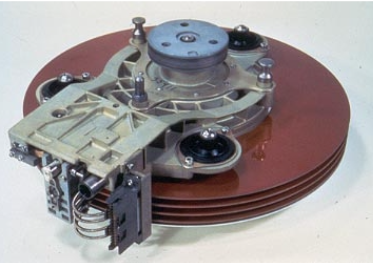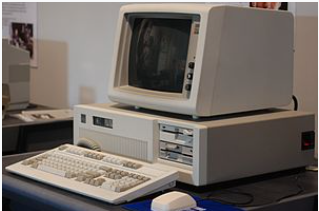Introduction
The 20th century marks the ‘first time’ for many things. It was the first time that humans flew with a self-powered aircraft thanks to the Wright brothers, many people drove cars for the first time in history, and the whole world was at war for the first (and second) time. It was also the first time we went to space and the first time we used computers.
IBM saw most of these events. The company was first founded in 1911 as an amalgamation of four companies, and it was first known as the Computing-Tabulating-Recording Company (CTR). It changed its name to the current International Business Machines (IBM) in 1924.

The rise
The rise of IBM came in the 1960s when the company started selling System/360 family of computers. The word family is necessary since all types of computers where different from the other since each of them was designed to solve one specific task. This invention affirmed IBM as the world’s largest computer company. With the continuous rise of hardware sales, IBM separated the software and services from the hardware sales. Before an IBM customer would receive, free of cost, the source code of the software after buying the hardware, moreover, the hardware would be installed for free by IBM employees. In 1969 IBM saw the amount of revenue that they could gain if they made people pay for software and services. After all, IBM was the only maker of such computers at the time, and, strong of this market monopoly, nothing could stop its greed.

Monopoly and Innovations
In the 1970s IBM introduced its new family of computers, the System/370 (who would have thought), this new system proved very much unrevolutionary compare to its predecessor but, after all, IBM was still ‘The Company’ when it came to computers. The revenue of the new system remained high. Breakthroughs were still made as IBM sold its first IBM 3340 a.k.a. ‘Winchester’ disk unit which doubled the information density (and therefore capacity) on disk surfaces. Winchester would become the conventional disk unit of the computer industry for the next 20 years. Other important IBM innovation of the 70s include the IBM 3360, a computer that used holographic technology to scan product prices in UPC bar codes (The Bar Code). Finally, IBM introduced the 3614 Consumer Transaction Facility, a primitive Automatic Teller Machine (ATM).

The beginning of the end for IBM starts in the 1980s. Since 1969 and throughout the 1970s IBM was involved in an anti-trust lawsuit filed by the U.S. Justice Department on the grounds of market monopoly (remember this lawsuit). Nevertheless, The 1970s saw IBM keeping its title as the largest computer company with a 62% market share.
The loss of a market: IBM and minicomputers
The company was trying to defend its monopoly from the Japanese competition (such as Toshiba and Fujitsu) and therefore started searching and investing ways that could lower overall cost. This was done to lower selling costs which would have made IBM computers market competitive. The company nevertheless joined the new and fast-growing market of minicomputers too late and lost its dominant position. In 1980 the company had a market share of 32% (from 62 a few years prior) and in 1982 its stock price fell by 22%. In 1982, as the last humiliation, the Justice Department dropped the lawsuit since the government “recognized what computer experts had long since concluded: IBM no longer dominates the computer business”.
IBM was very fond of avoiding the same situation with the newly born Personal Computer (PC) industry, and it invested time and money on studying the new market. The IBM PC was, in fact, a good product, and it proved as a trojan horse in the computer market as its introduction brought the dominance back to IBM.
In 1984 IBM’s PC/AT further shocked the industry due to its of affordability to performance ratio. All was well again for the computer industry’s giant.

The fall
Except it was not. At the end of the 1980s, followed by decisions such as pulling from the National Science Foundation Network (NSFNet), a sort of internet predecessor, IBM’s real issues began to show. The company was way too big and focused on too many devices; smaller single-device companies were taking over. After all, IBM was still producing things such as electric typewriters. It was an empire with too many regions and not enough emissaries to control all of them.
The beginning of the 1990s marks the fall of the Old IBM, between 1991 and 1993 the company registered net losses of 16 billion dollars as it failed to gain a place in the early years of the internet era. The IBM empire was over.
Sources
#for some reason i could not embed the links, the embedding tool was not working
https://en.wikipedia.org/wiki/History_of_IBM
https://sloanreview.mit.edu/article/the-decline-and-rise-of-ibm/
https://www.nytimes.com/1982/01/09/business/dominance-ended-ibm-fights-back.html




I never realized the US government went after IBM for having a monopoly, it’s great that they did though. Thank you for explaining in simple terms the fall of IBM. It makes sense as to why it happened however it was one of those things where the brand slowly faded away, at least from my experience. Great read!!!